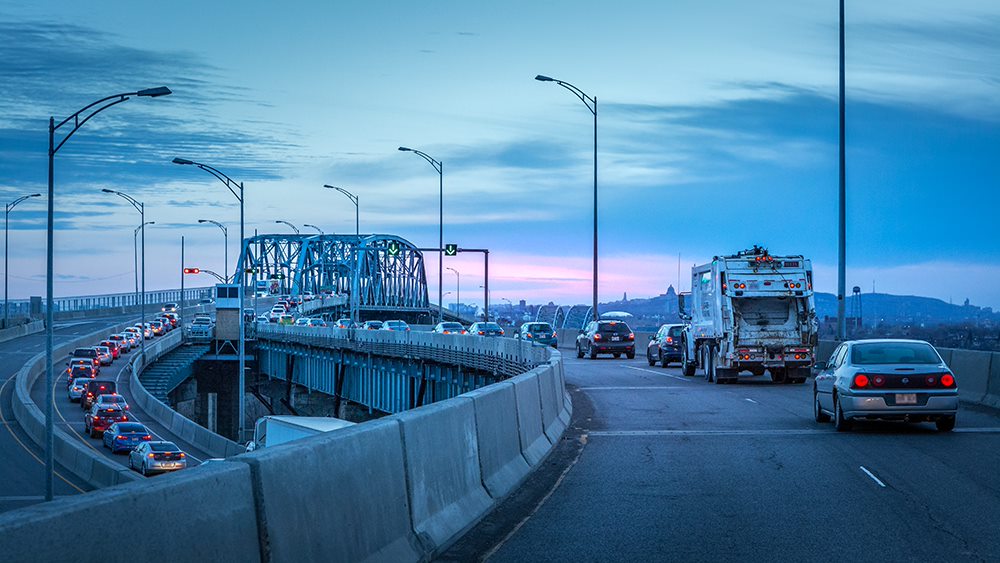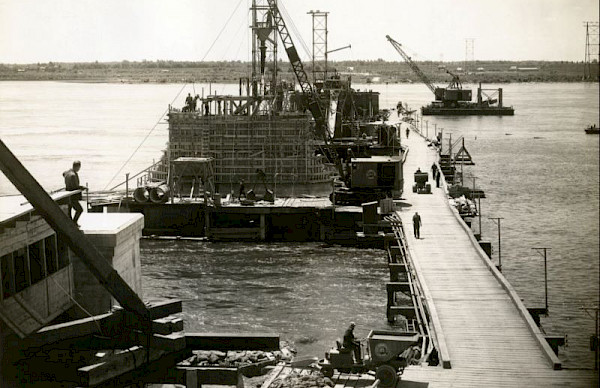- © 2025 The Jacques Cartier and Champlain Bridges Incorporated
- Terms of Use
- Site Map
The Honoré Mercier Bridge, which is co-managed by the provincial government and JCCBI, serves as an example for collaboration with the Mohawk Council of Kahnawà:ke and the expertise of Mohawk contractors.
The Honoré Mercier Bridge crosses the St. Lawrence River and the seaway, on the west side of the Island of Montreal.




This section is located on the north side of the St. Lawrence Seaway between the provincial section of the bridge and the access ramps on the South Shore.
It starts upstream from Pier 14 and on the downstream side from Pier 15 and extends to the south bank of the St. Lawrence Seaway channel to Pier 28. Section 1 consists of four lane road, with two lanes in each direction.
Section 2 is called the “east divided road” or “La Prairie Ramp.” It is located between Pier 28 and the east abutment. The ramp supports four traffic lanes or two lanes in each direction.
Section 3 is called the “single west road” or “ramp to Châteauguay.” It is located between Pier 31 (shared by Sections 2, 3 and 4) and the west abutment (shared by Sections 2, 3 and 4) and the west abutment (shared by Sections 3 and 4) and supports two lanes of bridge traffic heading to Châteauguay.
Section 4 is called the “single east road” or “ramp from Châteauguay” and connects traffic coming from Châteauguay to the bridge. It is located between Pier 31 (shared by Sections 2, 3 and 4) and the west abutment (shared by Sections 3 and 4) and supports two lanes of traffic coming from Châteauguay to the bridge.
Any questions?